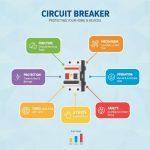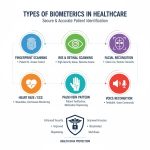The Assistive Technology Market: Transforming Lives Through Innovation and Accessibility
Key Takeaways
- The global assistive technology market reached USD 21.95 billion in 2022 and is projected to grow to USD 31.22 billion by 2030, representing a compound annual growth rate of 4.5%
- Aging populations worldwide and increasing prevalence of disabilities are primary drivers fueling market expansion
- Physical and mobility devices currently dominate the market, but digital assistive technologies are experiencing rapid growth
- North America leads the global market, while Asia-Pacific shows the highest growth potential due to improving healthcare infrastructure
- High costs and limited awareness remain significant barriers to market penetration, particularly in developing regions
- Leading companies are focusing on AI integration, IoT connectivity, and personalized solutions to gain competitive advantage
Global Market Overview of Assistive Technology
The Assistive Technology Market stands at a pivotal moment in healthcare innovation, representing one of the most meaningful intersections of technology and human empowerment. With a market valuation of USD 21.95 billion in 2022, this sector is poised for substantial growth, projected to reach USD 31.22 billion by 2030. This expansion, characterized by a steady compound annual growth rate of 4.5%, reflects not just economic opportunity but a fundamental shift in how society addresses disability and functional limitations.
The market’s robust growth trajectory stems from a convergence of demographic, technological, and social factors. As global populations age and medical advances enable people to survive previously fatal conditions, the number of individuals requiring assistive technologies continues to rise. The World Health Organization estimates that over one billion people worldwide currently need at least one form of assistive product, a figure expected to double by 2050. This staggering demand creates both challenges and opportunities for market participants.
Get a Sample Copy:- https://www.vantagemarketresearch.com/assistive-technology-market-1786/request-sample
The assistive technology ecosystem encompasses an extraordinarily diverse range of products and services. From traditional mobility aids like wheelchairs and walkers to cutting-edge brain-computer interfaces and AI-powered communication devices, the market serves individuals across the entire spectrum of physical, sensory, and cognitive abilities. This diversity drives market segmentation along multiple dimensions, including product type, disability category, end-user setting, and distribution channel. Each segment presents unique growth dynamics and competitive landscapes, creating a complex but opportunity-rich market environment.
Technology convergence plays a crucial role in shaping market evolution. The integration of smartphones, artificial intelligence, Internet of Things connectivity, and cloud computing has transformed many assistive devices from simple mechanical aids into sophisticated, connected systems. This digital transformation not only enhances device functionality but also enables new business models based on software subscriptions, remote monitoring, and data analytics. Companies that successfully navigate this technological shift position themselves for sustained growth in an increasingly digital healthcare landscape.
Key Market Drivers and Restraints
The assistive technology market’s growth trajectory is powered by multiple interconnected drivers that create sustained demand across global markets. The aging population phenomenon represents perhaps the most significant force shaping market dynamics. By 2050, the United Nations projects that one in six people worldwide will be over age 65, compared to one in eleven in 2019. This demographic shift creates exponential growth in age-related disabilities, including vision loss, hearing impairment, mobility limitations, and cognitive decline. Each of these conditions requires specific assistive technologies, driving demand across multiple market segments simultaneously.
Rising prevalence of chronic diseases and disabilities among younger populations adds another layer of market demand. Conditions such as diabetes, cardiovascular disease, and neurological disorders often result in functional limitations requiring assistive support. Additionally, improved survival rates for premature infants, accident victims, and individuals with severe medical conditions mean more people are living with disabilities that require long-term assistive technology support. This trend particularly impacts the pediatric assistive technology segment, which shows strong growth potential as healthcare systems increasingly recognize the importance of early intervention.
Government initiatives and favorable reimbursement policies significantly influence market accessibility and growth. Many developed nations have implemented comprehensive disability legislation mandating reasonable accommodations and assistive technology provision in educational, employment, and public settings. Medicare, Medicaid, and private insurance coverage for assistive devices varies widely but continues to expand as policymakers recognize the cost-effectiveness of enabling independence versus institutional care. These policy frameworks create stable demand while encouraging innovation through research grants and tax incentives.
However, substantial restraints continue to limit market potential. Cost remains the primary barrier, with many advanced assistive technologies priced beyond the reach of individuals without comprehensive insurance coverage. A sophisticated power wheelchair can cost USD 15,000 to 30,000, while advanced prosthetic limbs may exceed USD 100,000. Even basic devices like hearing aids, averaging USD 2,000 to 7,000 per pair, represent significant financial burdens for many families. This cost barrier is particularly acute in developing countries where insurance coverage is limited and out-of-pocket healthcare expenses are common.
Limited awareness and social stigma surrounding disability and assistive technology use create additional market challenges. Many individuals who could benefit from assistive devices delay or avoid adoption due to concerns about appearing disabled or dependent. Healthcare providers often lack comprehensive knowledge about available assistive technologies, leading to under-prescription and missed opportunities for improving patient outcomes. Addressing these awareness and attitude barriers requires sustained education efforts targeting both healthcare professionals and the general public.
Product Segmentation and Leading Technologies
The assistive technology market encompasses a vast array of products designed to address diverse functional limitations, creating a complex segmentation landscape that continues to evolve with technological advancement. Physical and mobility devices currently dominate market share, accounting for approximately 40% of global revenue. This category includes wheelchairs, prosthetics, orthotics, walking aids, and transfer equipment. Within this segment, powered wheelchairs and advanced prosthetics incorporating microprocessor controls and AI-driven adaptation represent the fastest-growing subcategories, driven by technological innovation and improved functionality.
Sensory assistive devices constitute the second-largest market segment, addressing vision and hearing impairments affecting hundreds of millions globally. Hearing aids have undergone remarkable transformation, evolving from simple amplification devices to sophisticated digital processors capable of filtering background noise, connecting to smartphones, and automatically adjusting to different acoustic environments. The cochlear implant market shows particularly strong growth, with bilateral implantation becoming increasingly common and device capabilities expanding to include direct audio streaming and improved speech recognition in noisy environments.
Vision assistive technologies range from traditional aids like magnifiers and Braille displays to cutting-edge solutions incorporating artificial intelligence and computer vision. Smart glasses equipped with cameras and AI processors can describe scenes, read text, and identify faces for users with visual impairments. Electronic Braille displays and refreshable tactile screens enable blind users to access digital content, while screen reading software and voice assistants have become essential tools for computer and smartphone accessibility. These digital solutions benefit from rapid advances in AI and natural language processing, creating increasingly seamless user experiences.
Communication and cognitive assistive technologies represent a rapidly expanding segment driven by software innovation and mobile computing proliferation. Augmentative and alternative communication (AAC) devices have evolved from simple picture boards to sophisticated tablet-based systems incorporating predictive text, symbol libraries, and voice output. For individuals with cognitive impairments, assistive technologies include memory aids, task prompting systems, and cognitive training software. The integration of AI and machine learning enables these systems to adapt to individual user patterns and preferences, improving effectiveness over time.
The daily living aids segment addresses fundamental activities such as eating, dressing, bathing, and household tasks. While often mechanically simple, these devices play crucial roles in maintaining independence and dignity. Innovation in this segment focuses on universal design principles and smart home integration. Voice-controlled home automation, robotic assistance for daily tasks, and IoT-enabled monitoring systems represent emerging subcategories with significant growth potential as smart home adoption accelerates globally.
Regional Market Analysis
North America maintains its position as the dominant force in the global assistive technology market, accounting for approximately 35% of worldwide revenue. The United States drives regional performance through a combination of high healthcare spending, comprehensive insurance coverage for many assistive devices, and strong advocacy for disability rights. The Americans with Disabilities Act and similar legislation create mandated demand for assistive technologies in educational institutions, workplaces, and public facilities. Additionally, the presence of major market players, advanced healthcare infrastructure, and high consumer awareness contribute to market leadership.
The North American market demonstrates particular strength in high-technology segments, including advanced prosthetics, brain-computer interfaces, and AI-powered assistive devices. Research institutions and universities collaborate extensively with industry partners, creating innovation ecosystems that accelerate product development and commercialization. Government funding through agencies like the National Institutes of Health and Department of Veterans Affairs provides crucial support for assistive technology research and deployment, particularly for military veterans with service-related disabilities.
Europe represents the second-largest regional market, characterized by strong social welfare systems and comprehensive healthcare coverage in many countries. The European Union’s disability strategy and accessibility directives create harmonized standards and market opportunities across member states. Countries like Germany, the United Kingdom, and Nordic nations lead in market penetration and innovation adoption. The region shows particular strength in design-focused assistive technologies that emphasize aesthetics alongside functionality, reflecting European consumer preferences for products that integrate seamlessly into daily life.
Asia-Pacific emerges as the fastest-growing regional market, driven by massive population bases, rapid economic development, and improving healthcare infrastructure. China and India, with their large aging populations and rising middle classes, present enormous growth opportunities. Japan leads in technological innovation, particularly in robotics and elderly care technologies, setting trends that influence global market development. However, the region faces challenges including limited insurance coverage, varying regulatory standards, and significant rural-urban disparities in healthcare access.
Latin America, the Middle East, and Africa represent emerging markets with substantial unmet needs but significant barriers to adoption. These regions face challenges including limited healthcare funding, inadequate distribution infrastructure, and low awareness of assistive technology benefits. However, mobile technology proliferation and innovative distribution models create opportunities for market expansion. Non-governmental organizations and international development agencies play crucial roles in these markets, often serving as primary channels for assistive technology distribution and training.
End-User Insights and Distribution Channels
The assistive technology market serves diverse end-users through multiple distribution channels, creating a complex ecosystem that continues to evolve with changing healthcare delivery models and consumer preferences. Hospitals and rehabilitation centers represent the largest institutional end-user segment, serving as primary points for assistive technology assessment, fitting, and training. These facilities typically employ specialized teams including occupational therapists, physical therapists, and assistive technology professionals who evaluate individual needs and recommend appropriate devices. The institutional market drives demand for high-end, clinically sophisticated devices while influencing consumer awareness and adoption patterns.
Home healthcare represents a rapidly growing end-user segment as healthcare systems worldwide shift toward community-based care models. This trend accelerates assistive technology adoption by bringing devices directly into living environments where they will be used long-term. Home healthcare providers play crucial roles in device training, maintenance, and ongoing support, creating opportunities for service-oriented business models. The COVID-19 pandemic significantly accelerated home healthcare adoption, establishing new patterns of care delivery that continue to drive market growth.
Educational institutions constitute another vital end-user category, particularly for pediatric assistive technologies and learning-related devices. Schools and universities increasingly recognize their obligations to provide equal access to education for students with disabilities, driving demand for communication devices, learning aids, and accessibility software. The education market shows particular strength in technology-forward solutions that integrate with digital learning platforms and support remote education delivery. Educational settings also serve as important venues for early assistive technology exposure, influencing lifetime adoption patterns.
Online retail channels have transformed assistive technology distribution, particularly for consumer-oriented devices and accessories. E-commerce platforms enable direct-to-consumer sales, price comparison, and access to user reviews, empowering informed purchasing decisions. However, online distribution faces challenges for devices requiring professional fitting or extensive training. Hybrid models combining online ordering with local service provision represent an emerging trend addressing these limitations. Amazon, specialized assistive technology retailers, and manufacturer-direct websites compete for online market share while expanding product selection and improving delivery logistics.
Specialty assistive technology stores and durable medical equipment suppliers maintain important roles despite digital disruption. These businesses provide hands-on product trials, expert consultation, and ongoing support services that online channels struggle to replicate. Many operate on hybrid models, maintaining physical showrooms while expanding online presence. Relationships with healthcare providers, insurance expertise, and repair services create competitive advantages for established specialty retailers. The most successful operators focus on complex, high-value devices requiring significant customer support.
Competitive Landscape and Market Players
The assistive technology market features a diverse competitive landscape ranging from multinational medical device corporations to innovative startups addressing specific user needs. Industry leaders including Sonova Holding AG, William Demant Holdings, Invacare Corporation, and Ottobock have established strong market positions through comprehensive product portfolios, global distribution networks, and sustained research investment. These companies benefit from economies of scale, brand recognition, and long-standing relationships with healthcare providers and insurance systems. Their strategies typically emphasize technological innovation, strategic acquisitions, and geographic expansion to maintain competitive advantages.
Mid-tier companies focus on specific product categories or regional markets, often demonstrating greater agility and innovation than larger competitors. Companies like Permobil, Tobii Dynavox, and ReSound compete effectively by specializing in particular assistive technology segments and developing deep expertise in user needs. These firms frequently pioneer new technologies and user-centered design approaches that larger companies later adopt or acquire. Strategic partnerships with technology giants like Apple, Google, and Microsoft increasingly influence competitive dynamics as consumer technology platforms integrate accessibility features.
The startup ecosystem plays a vital role in driving assistive technology innovation, particularly in emerging categories like brain-computer interfaces, AI-powered solutions, and IoT-enabled devices. Venture capital investment in assistive technology startups has increased significantly, attracted by large addressable markets and meaningful social impact. Successful startups often target underserved niches or leverage new technologies to dramatically improve existing solutions. Many established companies actively monitor and acquire promising startups to access innovation and entrepreneurial talent.
Strategic collaborations increasingly characterize market competition as companies recognize the value of ecosystem approaches. Partnerships between assistive technology manufacturers and mainstream technology companies create powerful synergies, exemplified by hearing aid integration with smartphones and smart home compatibility for daily living aids. Healthcare system partnerships enable integrated care delivery models while university collaborations accelerate research and development. These collaborative approaches will likely intensify as market complexity increases and technology convergence accelerates.
Looking toward 2030, competitive success will require balancing multiple strategic imperatives. Companies must invest in AI and digital technologies while maintaining focus on user-centered design and real-world effectiveness. Price pressure from insurance systems and government payers demands operational efficiency while innovation requirements necessitate sustained R&D investment. Geographic expansion into emerging markets offers growth opportunities but requires adapted products and distribution models. Most critically, successful companies will be those that genuinely understand and address the diverse, evolving needs of people with disabilities, creating solutions that enhance independence, dignity, and quality of life. The assistive technology market’s future belongs to organizations that combine technological sophistication with deep empathy and commitment to user empowerment.
FAQs
- What factors are driving the growth of the Global Assistive Technology Market?
- How is the Compound Annual Growth Rate (CAGR) of 4.5% calculated for the Assistive Technology Market?
- What types of products are included in the Assistive Technology Market?
- Why is the Assistive Technology Market projected to reach USD 31.22 billion by 2030?
![[Market Research Reports] – Research Google News Blog | VMR.Biz](https://www.vmr.biz/wp-content/uploads/2022/12/logo-removebg-preview.png)











